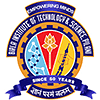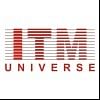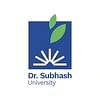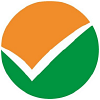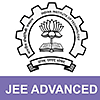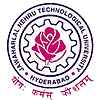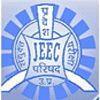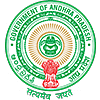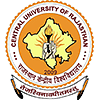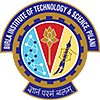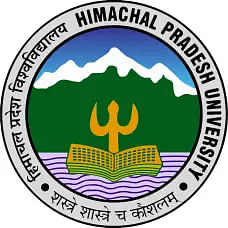| Subject |
BITS HD Syllabus |
| Chemical Engineering |
- Chemical Process Calculations: Units and Dimensions, The Chemical Equation and Stoichiometry, Material Balances, Energy Balances, Properties of Gases, Vapors, Liquids and Solids, Phase Equilibria, Combustion Calculation, UnsteadyState Material, and Energy Balances.
- Fluid Flow Operations: Fundamental Concepts and Fluid Statics, Integral and Differential Analyses for Fluid Motion, Internal and External Fluid Flow and Flow through Packed Bed, Dimensional Analysis, and Fluid Machinery, Agitation, and Introduction to Compressible Flow.
- Chemical Engineering Thermodynamics: First & Second Laws, PVT behavior & Heat Effects, Properties of pure fluids and thermodynamics of flow processes, Solution thermodynamics, VLE, and chemical reaction equilibrium
- Mass Transfer Operations: Molecular diffusion and mass transfer coefficients, Interphase mass transfer, Gas absorption, Distillation, Liquid extraction, and leaching.
- Heat Transfer Operations: Steady and Unsteady state heat conduction, Natural & Forced convection, Radiation, Condensation, boiling and evaporation, Heat Exchangers.
- Selected Chemical Engineering Operations: Properties and Handling of Particulate Solids, Mechanical Separations, Adsorption and Fixed-Bed Separations, Drying of Solids, Membrane Separation Processes, and Crystallization.
- Kinetics & Reactor Design: Mole balances and reactor sizing, Rate laws and stoichiometry, Isothermal reactor design for single and multiple reactions, Analysis of laboratory reactor data, and reaction mechanisms for nonelementary reactions, Non-isothermal reactor design for single and multiple reactions, Heterogeneous reactors, Data analysis & design, Non-Ideal reactors.
- Chemical Process Technology: Process synthesis concepts for flow sheet generation; species allocation; separation task sequence and task integration, Technologies related to Inorganic Chemical Industries, Technologies related to Natural Product Industries, Technologies related to synthetic organic chemical industries, Technologies related to Polymerization industries.
- Process Design Decision: Engineering Economics; Economic Decision Making, Input Information and Batch versus Continuous; Input-Output Structure, Recycle Structure; Separation System, Heat Exchanger Networks (Energy Integration), Cost Diagrams; Preliminary Process Optimization; Process Retrofits.
- Process Control: Dynamic modeling and simulation of momentum, energy, mass transfer, and reacting systems, Analysis of the dynamic behavior of chemical processes, Analysis and design of simple feedback and advanced control systems, Design of control systems with multiple input and multiple outputs, Digital sampling, filtering, and control.
|
| Civil Engineering |
- Design of Concrete Structures: Materials for reinforced concrete, Design of Concrete Mix, Design philosophies, Design of singly and doubly reinforced rectangular and flanged sections for Flexure using Working Stress and Limit State Design approach, Design for bond, anchorage and development length, Design of beams for Shear, serviceability requirements, Design of one way slab, two way slab and staircase, yield line theory, Design for columns, Foundations , retaining walls and introduction to prestressed concretes.
- Design of Steel Structures (Limit State Design): Steel Design Specifications and Connections, Design of Tension and Compression Members, Design of beams and plate girders, Design of Industrial Structures, Introduction to plastic analysis and design.
- Analysis of Structures: Statics of Structures and Degree of Indeterminacy, Analysis of Determinate and Indeterminate Structures, Deflection of beams and Frames, Influence lines and its Applications, Introduction to Matrix Methods of Structural Analysis.
- Transportation Engineering: Highway Planning and Geometric Design, Highway Materials & Pavement Design, Traffic Engineering & Transport Planning, Railway Engineering, Airport Engineering.
- Geodesy: Chain Survey, Compass Survey & leveling, Theodolite, Tachometric surveying & Traversing, Curve Ranging, Contouring & Plane Tabling, Trigonometric Leveling, Areas and Volumes, Spherical triangle system, astronomical coordinate system, Geodetic surveying, Total Stations and other advancements in surveying.
- Mechanics and Strength of Materials: Fundamental principles of Mechanics, Introduction to Mechanics of Deformable Bodies, Forces and Moments Transmitted by Slender Members, Stress and Strains, Deflections due to Bending.
- Construction Planning and Technology: Building materials, Geotechnical materials, compaction & stabilization, Geotechnical materials, compaction stabilization, Construction planning and scheduling, Advanced construction techniques.
- Soil Mechanics and Foundation Engineering: Index properties, classification, and compaction of soil, Effective stress, permeability and seepage through the soil., Stresses due to applied load and settlements, Shear strength of soil, the stability of slopes and earth pressure, Shallow foundations, deep foundations, and soil exploration.
- Water and Wastewater Treatment: Introduction to the basics of water supply and wastewater engineering, Natural methods for water and wastewater treatment, the Unit operation for water and wastewater treatment, Treatment and disposal of sludge, Advance methods of treatment for water and wastewater, application of hydraulics in designing of sewers and water supply distribution networks.
- Hydraulics and Fluid Mechanics: Fluid Statics and Fluid Flow Kinematics, Boundary Layer Theory, Flow through pipes and open channels under different conditions & types, Dimensional Analysis and Similitude, Application of both Hydraulic and Hydrologic processes.
|
| Electrical and Electronics Engineering |
- Analog Electronics: Operational amplifier basics, ideal and practical Op-amp configurations, special purpose linear Op-amp circuits: instrumentation amplifiers, isolation, programmable, negative feedback amplifiers etc., Active filters, IC filters; non-linear operational amplifier circuits, analog multipliers, precision and wave shaping circuits, comparators and Schmitt triggers and applications, Signal generators: sinusoidal and non- sinusoidal oscillators, integrated circuits timers. function generators, PLL, Voltage Regulators; voltage regulator IC, switched capacitor voltage converters, switching regulators, Power amplifiers, and output stage circuits, IC power amplifiers, high-frequency amplifiers, tuned amplifiers.
- Digital Electronics & Computer Organization: Number systems & Codes, Boolean algebra & Simplification, Digital Logic Families, Combinational logic Design – Decoders, Encoders, MUX, DeMUX, Arithmetic Circuits, Sequential Logic design- Flip-flops, State machines, ASM Counters & Registers, PLDs & FPGAs & Computer Organization.
- Microprocessors: Architectures of Intel - x85 & x86 Processors, Instruction set & Assembly Language programming, Memory Interfacing, Data Transfer Schemes, Peripherals & I/O Interfacing using 8255, 8253, 8251, Disk Organization.
- Circuits & Signals, Digital Signal Processing: Linear convolution, Fourier Transforms, DFT & FFT, Laplace Transforms & its application to system analysis, Z-transform & its application to system analysis, Analog & digital filter design (FIR, IIR), Multirate signal processing.
- Electrical Sciences: Basic Circuit elements and laws, Analysis Techniques & Theorems, Time-domain analysis of 1st & 2nd Order Circuits, AC Circuit Analysis, Frequency domain analysis, Series and Parallel RCL Circuit, Important Power Concepts, Semiconductors, Construction, operation and application of Junction Diode, Zener Diode, Transistor (BJT’s), FET’s, MOSFET etc., Feedback in Amplifier Circuits, AC Generation and Magnetic Circuits, Single- phase circuit analysis, Magnetic Circuit Calculations, Three- phase Circuit analysis, Electrical Machines (Construction, Operation & usage), Transformers, DC Machines, Three-phase synchronous generator, Three-phase induction motors, Single-phase induction motor, Fractional KW motors.
- Electronic Devices & Integrated Circuits, Microelectronics Circuits: Semiconductor materials and their properties, Carrier transport and excess carriers in semiconductors; Single p-n junction devices- rectifier diodes, switching diodes, microwave diodes, optoelectronic devices, Bipolar junction transistors; JFET; MOSFET; MOS and CMOS devices; Device fabrication techniques and introduction to ICs, Basic single and two-stage transistor amplifier; current mirrors and current sources; active load biasing in integrated circuits, Voltage sources and voltage references, differential and multistage amplifiers; frequency response and frequency compensation, Operational amplifiers-2 stage, stability analysis and compensation techniques.
- Control Systems, Power Electronics: Mathematical model of physical systems (Differential equations, Block diagram, signal flow graph, transfer function) feedback characteristics of control systems, control systems components, Time response analysis, stability, Root locus concepts, frequency response (Bode plots, Polar plots, Nyquist plots), state space analysis and compensation concepts, Phase control resistors, DC-DC step down chopper, Step up chopper, inverters.
- Electromechanical Energy Conversion, Power Systems: DC Machines, construction, Operation, Characteristics & design, AC motors & generators, Transformers, Transmission lines: modeling & analysis, Steady state power system analysis & load flows.
- Electromagnetic Fields, Telecom-Switching: Maxwell’s equation in free space and time-varying fields, plane waves in dielectric and conducting media, wave reflection, refraction, diffraction and polarization, transmission lines and resonators, Smith chart and its application in stub and impedance matching calculations, Antennas and radiation, half-wave dipole, loop, helical, directive antenna, reflector, lens and horn antennas, antenna practice and measurements, Voice digitization, digital transmission and multiplexing, digital switching, Data and asynchronous transfer mode networks, telecommunication traffic analysis.
|
| Mechanical Engineering |
- Workshop Practice: Metal casting, Metal Machining, Metal forming, powder metallurgy, plastic forming and molding, Metal joining, Metrology, and heat treatment processes.
- Production Techniques: Advanced casting processes, Advances in metal cutting theory, machining processes, Advanced welding processes, Advanced metal forming processes, Manufacturing systems.
- Production Planning and Control: Forecasting and product planning, Process planning, job design, and work measurements, Facilities location and layout, Capacity planning, aggregate planning and scheduling, Inventory and quality control.
- Design of Machine Elements: Criteria for static failure and fatigue failure, design of screws and bolted joints, design of welded joints and riveted joints, Mechanical springs, Design of rolling element bearings, journal bearings and hydrodynamic lubrication, Design of gears, clutches, brakes, couplings, flywheels, flat and V-belt drives, Computer-aided design, geometric modeling of mechanical parts and finite element analysis.
- Kinematics & Dynamics of Machines and Vibrations: Principle of virtual work, D’Alembert’s principle, Kinetic Modeling, kinetics of mechanism (Four-bar mechanisms) and synthesis of cam – follower motion, Flywheels, governors, gyroscope and balancing, Free and forced vibration, Multi-degree of freedom (two of) free and forced vibrations, mode shapes, approximate methods of solutions.
- Transport Phenomena I: Fluid statics, Conservation laws, Viscous and inviscid flow analysis, Dimensional analysis, Analysis of fluid machines.
- Transport Phenomena II : Conduction: steady state and unsteady state heat conduction, Convection: analytical and empirical relations for forced and free convection heat transfer, condensation and boiling, Radiation heat transfer: basic laws, shape factor, radiation heat exchange between surfaces, Heat exchanger: analysis and design, Mass transfer: diffusion and convective mass transfer.
- Thermodynamics: Properties of the pure substance, First law of thermodynamics, Second law of thermodynamics, Entropy, Irreversibility, energy, and thermodynamic relations.
- Applied Thermodynamics: Air standard cycles, gas power cycles, I.C. engines, Vapour compression and absorption cycle, Psychometrics and air conditioning, Vapour power cycles, boilers, its mountings, and accessories.
- Mechanics of Solids: the Fundamental principle of mechanics, Introduction to mechanics of deformable bodies, slender members, energy Methods, Stress, and strain: stress-strain-temperature relations, Symmetric and asymmetric bending, torsion, Curved beams, and thick shells, Buckling.
|
| Pharmacy |
- Natural Drugs, Phytochemistry, Pharmacognosy: General Pharmacognosy, traditional systems of medicine, plant nomenclature & classification, macro & micromorphology, standardization parameters; Properties, isolation techniques, tests and functions of alkaloids, alkaloidal drugs belonging to the classes: tropane, ecgonine, quinoline, isoquinoline, indole, purine, phenanthridine, diterpene, peptide, steroidal classes including pseudoalkaloids; Classification, isolation techniques, test for glycosides, glycoside drugs of class: anthraquinone, cardenolide, bufadienolides, saponins; Classification, isolation techniques, tests for volatile oils and fixed oils, volatile oil containing drugs including acyclic, monocyclic, bicyclic and tricyclic terpenoidal drugs, fixed oils containing saturated, unsaturated fatty acids; Classification, isolation procedures, test for resins, drugs of resin alcohol, acid resin and ester resin classes, classification and tests for gums, prepared gums and naturally occurring gums.
- Anatomy Physiology & Hygiene: Anatomy of a generalized cell, cellular transport mechanisms, cell division, body tissue types and functions, their properties and characteristics, Composition and functions of blood, Plasma Proteins, RBC, WBC, platelets- anatomy & functions, hemoglobin and blood groups, blood typing, anatomy and physiology of the heart, blood pressure, ECG and its significance, blood vessels, General aspects of neurology, central, peripheral nervous system (CNS and PNS), autonomic nervous system, endocrine glands, hormones:- their functions and mechanisms of action., Anatomy of the urinary system, mechanisms of urine production, diseases of the kidney, male, female reproductive systems and related disorders, Organs of the respiratory system, process of respiration, diseases related to the systems.
- Pharmaceutical Chemistry (Medicinal Chemistry, Chemistry of Synthetic Drugs and Applied Pharmaceutical Chemistry): Physico-chemical and stereochemical properties affecting drug actions, drug-receptor interactions, prodrugs and drugs metabolism., Classification, structure, synthesis, S.A.R. and mechanism of action of local anaesthetics, sedatives, hypnotics, antihistamines, antihypertensive agents, Various organic reactions involved in drug synthesis, addition, condensation, rearrangement, carbon-carbon bond formation, carbon-heteroatom bond formation, heterocyclic ring forming reactions., Chemotherapeutic agents: sources, synthesis and S.A.R, mechanisms of action of anti-bacterial, anti-cancer, anti-viral agents, Lead compound identification, retrosynthetic analysis, biotechnological approach to drug design and development, alkyl chain addition / deletion, ring expansion, ring contraction methods, synthesis and use of intermediates in organic systems.
- Pharmaceutical and Instrumental Methods of Analysis: IR, NMR, MASS – spectroscopic techniques, their principles, instrumentation, molecular characterization, calibration, operation, sample preparation and interpretation of results, UV-Vis. Spectrophotometer, spectrofluorimeter, AAS: their principles, instrumentation, calibration, operation, sample preparation and interpretation of results, Chromatographic Techniques – HPLC, GC, Paper, Gel electrophoresis – their principles, instrumentation, calibration, operation, sample preparation and interpretation of results, Titrimetric methods – neutralization (aqueous and non-aqueous), redox, precipitation, complexometric, iodometric and iodometric titrations: their principles, applications, assay techniques, Limit tests, microbiological assay, determination of water content, methoxyl groups; T.L.C, paper and column chromatographic techniques and their applications.
- Pharmacology and Toxicology: Introduction, Scope, and principles of basic pharmacology and toxicology, mechanisms of drug action, receptors and drug action, pharmacodynamic parameters affecting drug-receptor interaction, Pharmacokinetics and Pharmacodynamics., Cholinergic drugs, cholinergic blockers, adrenergic drugs, and their blockers, ganglionic and neuromuscular blocking agents – their mechanisms action., General and local anesthetics, anxiolytics, sedatives and hypnotics, antipsychotics and antidepressants, narcotic and non-narcotic drugs, NSAID’s, CNS stimulants anti-convulsants, anti-parkinsonisms agents, their mechanisms., Cardiotonics, antianginals, antihypertensives, diuretics, antiarrhythmic, drugs for blood disorders – their mechanisms., Principles of Chemotherapy, classification of chemotherapeutic agents, folate antagonists, protein, cell wall synthesis inhibitors, quinolone antibiotics, drugs for UTI, antifungal, antiviral, antitubercular, anthelmintics, antiemetics, anti-cancer drugs.
- Pharmaceutical Microbiology and Biochemistry: Introduction and classification of microbes, bacteria, virus, fungi, protozoa – physiology and cellular function, infections and immunity, microbial in antibiotic and vaccine preparations., Nutritional requirements and cultivation of microbes, culture media types, physical and chemical methods of microbial control, staining techniques, sterility testing and their validation, sterilization methods and applications., Microbial mechanisms of human pathogenicity, diseases of the skin, CNS, GIT, Respiratory Tract, immune system disorders, antimicrobial drugs and their evaluation., Carbohydrates Lipids, Proteins, Nucleic acids: their structures, biosynthesis, biochemical energetic functions, clinical pathology, deficiency disorders., Enzymes and their regulation; classification, structures, kinetics, inhibition mechanisms, applications.
- Forensic Pharmacy and Quality Control Management: Regulatory control of manufacturing and sales of pharmaceuticals and cosmetics, Drugs & Cosmetics Act, Medicinal and Toilet Preparations Act, Narcotics and Psychotropic Substances Act., Regulatory control of teaching and practice of Pharmacy: Pharmacy Act, Objectionable Advertisements Act, Shops and Establishments Act, Drug Price Control Order, Quality Assurance and Quality Audit: QC/QA functions, GLP, Quality audit, ISO certification, Good Manufacturing Practices: All aspects of good manufacturing practices, documentation, protocols involved, design of premises., Pharmaceutical Management: Planning, organizing, controlling of pharmaceutical manufacturing and marketing activities.
- Industrial And Physical Pharmacy: Physicochemical properties of Pharmaceutical agents, Rheology, Interfacial phenomenon, Micromeretics, Raw materials and Materials of construction of equipments., Kinetic Phenomenon, Chemical Kinetics, Stability testing, Dissolution, Diffusion., Materials of construction, Extraction, Communication, Mixing., Heat transfer, Distillation, Evaporation, Drying, Fluid Flow, Humidification, Dehumidification., Filtration, Crystallization, Compression.
- Pharmaceutical Formulations and Biopharmaceutics: Preformulation studies, Physicochemical properties of drugs and their impact on design of drug delivery systems, classification of dosage forms; Design, Preparation, Evaluation of Pharmaceutical Dosage Forms: Tablets, Solutions, Capsules ,Micro-encapsulation techniques;, Design, Preparation and Evaluation of Novel Drug Delivery Systems such as : Sustained Release, Controlled Release, Transdermal and Transmucosal, Ocular., Parenteral Products: Sterilization methodology, calculations, evaluation and preparation., Biopharmaceutics: ADME characteristics of drug and their importance in disease conditions, Pharmacokinetic drug interactions, bio-equivalence and bio-availability studies, Prodrugs.
- Dispensing Pharmacy: General Dispensing Procedures, Latin terms and Abbreviations, Pharmaceutical Calculations, Posology., Disperse Systems: Suspensions, Emulsions, Creams: General methods of manufacturing, problems associated with stability, Semi-solid Preparations like Ointments, Gels, Pastes, Suppositories and Pessaries: General methods of manufacturing, problems associated with stability, Incompatibilities involved in prescriptions and usage of additives., Containers and Closures: selection of appropriate containers and closures, Hospital Pharmacy Practice.
|
| Computer Science |
- Discrete Mathematics & Theory of Computation: Principles of Counting, Recurrence Relations., Sets, Functions, Relations, Propositional Logic, and Predicate Logic., Strings and Languages, Regular Expressions, Finite Automata, Context-Free Grammars, and Pushdown Automata., Turing Machines, and Decidability. Recursive Languages and Recursively Enumerable Languages.
- Data Structures and Algorithms: Algorithm Analysis, Asymptotic notion, Sorting – Comparison based Sorting, Distribution Sorting, External Sorting., ADTs, stacks, and queues. Searching-lists, sequences, dictionaries, and hash tables. Priority queues and heaps, Trees – Traversals and applications. Binary Trees – Structure, Representation, and Search. Search Trees – Binary Search Trees, Balanced Search Trees (AVL, Red-black). Multi-way Trees and Trees for External Storage., Graphs – Structure and Representation, Traversals, Path Problems, Spanning Trees, Flow Problems., Design techniques-greedy method, divide and conquer, dynamic programming, and backtracking. Complexity classes-P and NP. Reductions, NP-hard problems, and NP-completeness.
- Digital Electronics and Microprocessors: Combinational Logic Design, Adders, Multiplexers, De-Multiplexers, Encoders, Decoders. Sequential Logic Design, Counters, Registers., Programmable Logic Devices and Logic Families, 8085, 8086 architecture and assembly programming, Memory interfacing, Programmable peripheral devices and interfacing (8253, 8255,8259, 8251).
- Operating Systems: Tasks, Processes, and Threads. Process States & Transitions. Process organization. Process Scheduling. Concurrency, Mutual Exclusion, Process synchronization, Deadlock and Deadlock handling, Memory allocation, Paging, and Segmentation. Locality. Virtual memory. Frame allocation and Page replacement algorithms. Thrashing, File systems - Interface, Structure and Implementation., I/O system. Secondary Storage and Mass Storage Structure.
- Computer Organization and Architecture: Instruction Set Architecture - RISC & CISC processors., Computer Arithmetic & Control Unit, Cache Memory & Main Memory, I/O, Secondary Memory, RAID System, Bus & Interconnections, Pipelining, Superscalar Processors, and Introduction to Parallel Processing.
- Computer Networks: Physical Layer (Basics, Encoding schemes, Wireline and wireless Transmission media, WIreless and Wireline Protocols)., Data Link Layer (Basics, Wireless and Wireline Protocols, Performance, Security), Network Layer (Basics, Protocols, Performance, Security), Transport Layer (Basics, Protocols, Performance, Security), Application Layer (Basics, Protocols, Performance, Security).
- Database Management Systems: Data Modeling – ER Model, Relational Model, Object-oriented Model, Object-relational Model, Query Languages – Relational Algebra, Relational Calculus, & SQL, Normalization & Indexing – Functional Dependencies (FDs), Closure of the set of FDs, Attribute Closure, Canonical Cover, Normal forms up to 4NF. Primary, Clustering, & Secondary Indices, Tree-based Indexing., Query Evaluation & Optimization: Algorithms for evaluation of relational operators, Cost-based & heuristic query optimization techniques, Transaction Management – Concurrency: Locking & Timestamping & Crash Recovery: Log-based & Shadow Paging.
- Programming Languages and Compiler Construction: Imperative Programming Languages – Control Abstraction and Statements, Data Types and Data Representations, Imperative Programming Languages – Procedure Calls, Call Stack, Parameter Passing, Scope and Lifetime of Variables, Dynamic Memory Allocation., Syntax Analysis – Lexical Analysis, Parsing (Top-down and Bottom-up Parsing), Abstract Syntax and Symbol Tables., Semantic Analysis. Types, Representations and Type Checking. Syntax-Directed Translation. Intermediate Code, Code Generation – Basic Blocks and Flow Graphs, Register Allocation and Assignment, Code Generation Techniques.
- Software Engineering: Software Development – Lifecycle, Process Models, Project Management, Requirements Analysis, SRS, Structured Analysis, Object Oriented Analysis and Modeling based on UML, Structured Design, Object Oriented Design, Architectural Design, Design Patterns, Use of UML in Design, Software Testing – Black Box and White Box Testing, Test Cases, Testing Process, Testing for object-oriented applications and Testing for web applications., Software Metrics and cost Measurement. Product and Process management. Software complexity. Software coding styles., Quality attributes and CMM Model.
- Artificial Intelligence: Searching Strategies, Knowledge Representation, Reasoning (Certainty and Uncertainty based), Machine Learning, Multiagent Systems.
|
| Instrumentation |
- Analog Electronics: Operational amplifier basics, ideal and practical Op-amp configurations, Special purpose linear Op-amp circuits: instrumentation amplifiers, isolation, programmable, Negative feedback amplifiers etc., Active filters, IC filters; Non-linear operational amplifier circuits, analog multipliers, precision and wave shaping circuits, Comparators and Schmitt triggers and applications, Signal generators: sinusoidal and non- sinusoidal oscillators, integrated circuits timers. function generators, PLL, Voltage Regulators; Voltage regulator IC, Switched capacitor voltage converters, Switching regulators, Power amplifiers and output stage circuits, IC power amplifiers, High-frequency amplifiers, Tuned amplifiers.
- Digital Electronics & Computer Organization: Number systems & Codes, Boolean algebra & Simplification, Digital Logic Families, Combinational logic Design – Decoders, Encoders, MUX, DeMUX, Arithmetic Circuits, Sequential Logic design- Flip-flops, State machines, ASM Counters & Registers, PLDs & FPGAs & Computer Organization.
- Microprocessors: Architectures of Intel - x85 & x86 Processors, Instruction set & Assembly Language programming, Memory Interfacing, Data Transfer Schemes, Peripherals & I/O Interfacing using 8255, 8253, 8251, Disk Organization.
- Circuits & Signals, Digital Signal Processing: Linear convolution, Fourier Transforms, DFT & FFT, Laplace Transforms & its application to system analysis, Z-transform & its application to system analysis, Analog & digital filter design (FIR, IIR), Multirate signal processing.
- Electrical Sciences: Basic Circuit elements and laws, Analysis Techniques & Theorems, Time-domain analysis of 1st & 2nd Order Circuits, AC Circuit Analysis, Frequency domain analysis, Series and Parallel RCL Circuit, Important Power Concepts, Semiconductors, Construction, operation and application of Junction Diode, Zener Diode, Transistor (BJT’s), FET’s, MOSFET etc., Feedback in Amplifier Circuits, AC Generation and Magnetic Circuits, Single- phase circuit analysis, Magnetic Circuit Calculations, Three- phase Circuit analysis, Electrical Machines (Construction, Operation & usage), Transformers, DC Machines, Three phase synchronous generator, Three-phase induction motors, Single-phase induction motor, Fractional KW motors.
- Electronic Devices & Integrated Circuits, Microelectronics Circuits: Semiconductor materials and their properties, Carrier transport and excess carriers in semiconductors; Single p-n junction devices- rectifier diodes, Switching diodes, Microwave diodes, Optoelectronic devices, Bipolar junction transistors; JFET; MOSFET; MOS and CMOS devices; Device fabrication techniques and introduction to ICs, Basic single and two-stage transistor amplifier; Current mirrors and current sources; Active load biasing in integrated circuits, Voltage sources and voltage references, Differential and multistage amplifiers; Frequency response and frequency compensation, Operational amplifiers-2 stage, Stability analysis and compensation techniques.
- Control Systems, Power Electronics: Mathematical model of physical systems (Differential equations, Block diagram, signal flow graph, transfer function) feedback characteristics of control systems, control systems components, Time response analysis, stability, Root locus concepts, frequency response (Bode plots, Polar plots, Nyquist plots), state space analysis and compensation concepts, Converters, Inverters and Choppers, Step up chopper, inverters.
- Industrial Instrumentation & Control, Analysis Instrumentation: Elements of process control loop, mathematical modeling, dynamic closed loop characteristics, Controller principles & tuning, DDC loop, Hydraulic, Pneumatic, Electronic controller, Complex multivariable control schemes, final control elements, PLCs, DCS, SCADA, AI techniques: Expert system, ANN, Fuzzy Logic, UV/VIS/IR Spectrophotometer, FES/AAS, X-ray analyzers, NMR, Mass spectrometers, Sampling systems for online analyzers, TC analyzer, Paramagnetic O2 Analyzer, Fluid density monitors, GLC.
- Transducers & Measurement systems : Generalized measurement system, functional elements, Static and dynamic characteristics, Resistive, inductive, capacitive, piezoelectric, Hall effect, photoelectric, fiber optic transducer, MEMS-based transducers, Measurement of Motion, pressure, flow, temperature level, viscosity, pH, humidity, vibration, Signal conducting techniques using op-amps, instrumentation amplifier, bridges, carrier amplifier, chopper amplifier, charge amplifier and Isolation amplifier, Data converter, filters, Data acquisition system, inverse transducers & feedback measurement systems.
- Electronic Instruments and Instrumentation Technology + Medical Instrumentation: Electronic indicating, display, Recording & Analysis Instruments, Signal generators, Frequency synthesizers, Counters, Grounding and Shielding Techniques, Instrumentation in hazardous areas, Industrial data communication, Transducers for biomedical measurements, Cardiovascular measurements, Patient care monitoring systems, Instrumentation for respiratory and nervous system, clinical lab measurements.
|
| Biological Sciences |
- Genetics: Laws of inheritance and genetic interaction, Genetic mapping in Virus. Bacteria & Eukaryotes, Gene expression in prokaryotes and eukaryotes, Control of gene expression in prokaryotes eukaryotes and Viruses, Population and evolutionary genetics.
- Molecular Technique: Restriction endonuleases, Vectors and cloning, Blotting technique, PCR, Sequencin.
- Biological Chemistry: Chemistry of Biomolecules, Enzymes, Vitamins & Coenzymes, Bioenergetics, and biological oxidation, Metabolism of Biomolecules, Photosynthesis.
- Microbiology: Fundamentals of Microbiology, A survey of the microbial world, Host-Microbe interaction, Microbes and Human disease, Environmental and applied microbiology.
- Ecology: Abiotic factors, Ecosystem ecology and energy flow, Community ecology and population ecology, Regional Ecology (Terrestrial and Aquatic), Regional Ecology (Terrestrial and Aquatic).
- Plant Physiology: Transport and translocation of water and solutes, Essential elements and their function, Plant development and PGRs, Ascent of sap and translocation in the phloem, Movement in plants.
- Biophysics: Chemical properties of the basic unit of life, energy forces, bonds., Conformation of Biomolecules, Biological membranes and Biomechanics, Physiochemical techniques to study biomolecules, X-ray crystallography, NMR, molecular modeling.
- Developmental Biology: Model systems- Vertebrates, Invertebrates and Plants, Axis and germ layers, The mesoderm and early nervous system, Morphogenesis and cell differentiation, Organogenesis, germ cells, and sex.
- Cell Biology: Preview of the cell, cellular membranous systems, Transport, Mitochondria, Chloroplast, energy-transducing organelle, Golgi, Nucleus, Cytoskeletal network, Cell growth & proliferation, Cell Immunity.
- Animal physiology: Digestive and Respiratory system, Circulatory system, Excretory system, Nervous and Endocrine system, Body Immune system.
|
| Chemistry |
- Chemical Kinetics: Integrated rate laws for simple and complex reactions. Integrated rate laws in terms of properties dependent on concentrations of reactants and/or products. Effect of temperature on reaction rates, Theories of reaction rates: Collision theory and transition state theory, Rate laws, and reaction mechanism. Unimolecular, bimolecular and trimolecular reactions. RRK theory of unimolecular reaction, Reactions in solution. Reactions in the excited state. Fast reaction kinetics, Homogeneous and heterogeneous catalysis.
- Chemical Thermodynamics: Concept and laws of thermodynamics, Thermodynamics of gases, Thermodynamics of non-ideal and electrolyte solutions, Statistical thermodynamics, Non-equilibrium thermodynamics.
- Quantum chemistry and atomic and molecular structure: Mathematical and Physical Foundations of Quantum Chemistry, Simple potential problems in one, two and three dimension including particle in a box, harmonic oscillator, potential barrier, rigid rotator hydrogen atom, He-atom, effective nuclear charge, Slater orbitals, electron spin, Solution of Hartree-Fock equation for He-atom, self-consistent field, Two electron system, Slater determinants, Hartree-Fock method, Approximation methods, variation, perturbation theory angular momentum, Atomic structure, Molecular structure.
- Structure and Reactivity of Organic Compounds: Aliphatic & Aromatic Nucleophilic Substitutions, Aromatic Electrophilic Substitution, Addition to carbon-carbon multiple and carbon-hetero-multiple bonds, Eliminations, Orbital symmetry in organic reactions.
- Instrumental methods of analysis: Magnetic Resonance Spectroscopy (1H NMR, 13C NMR, EPR), IR Spectroscopy, Mass Spectrometry, Ultraviolet and visible spectroscopy, fluorescence spectroscopy, chromatography and other separation techniques, Structure Resolution by the combination of techniques.
- Bonding in inorganic compounds: Point Groups and Molecular Symmetry, Character Tables and applications of point group symmetry, Ionic bond; Polarization, Covalent bond; VB and MO theories, Coordination Compounds bonding and spectra.
- Chemical experimentation: Acid-base titrations, Complexometric titrations, Synthesis of organic compounds and functional group identification, Study of the kinetics of chemical reactions, Determination of partition function, Adsorption isotherm, Synthesis and characterization of nanomaterials, Qualitative analysis of salts/mixture of salts.
- Synthetic Organic Chemistry: One Group C-X Disconnections, Two Group C-X Disconnections, One Group C-C Disconnections, Two Group C-C Disconnections, Ring Synthesis and Synthesis of Heterocyclic Compounds.
- Basic organic and inorganic chemistry: Stereochemistry (Isomerism, chirality, origin of optical activity, stereochemistry of cyclic compounds, resolution), Conformations (Rotation around sigma bonds, conformational analysis of butane, cyclohexane, and substituted cyclohexanes.), Name reactions (Diels Alder reaction; FriedelCrafts(acylation and alkylation) reaction; Clemmensen reduction; Wittig reaction; Claisen condensation; Hofmann and Cope eliminations), Co-ordination chemistry, Chemistry of main group elements.
- Chemistry of Organic Compounds: Carboxylic acid and carboxylic acid derivatives, Chemistry of aliphatic and aromatic amines, Structure, property, and reactions of five and six-membered heterocyclic compounds containing O, N, and S, Organometallic compounds in organic synthesis: Organolithium, Organomagnesium, Organozinc, and Organocopper, Carbohydrates.
|
| Economics |
- Principles of Economics: Demand, Supply, Elasticity, Consumer Behavior, Analysis of Production and Cost Analysis, Markets, Basics of Macroeconomics, Economics of Public Goods.
- Fundamentals of Finance & Accounting: Basics of Accounting, Financial Statements, and Analysis, Introduction to Securities, markets, and analysis, Banking System, RBI, Non-bank financial intermediaries, Markets for Future, Options & Derivatives; Foreign Exchange Markets.
- Macroeconomics: Theory of Consumer Behaviour, Topics in Consumer Theory, Theory of Firm, Theory of Market Structure, General Equilibrium, Welfare Economics, Externalities, Common & Public Goods.
- Macroeconomics: Macroeconomic System- Measurement, I-O System, Flow of Funds, Keynesian System – Demand, Money, Interest, Income, Output, Inflation& Unemployment, Money Supply, Consumption, and Investment, Consumption and Investment.
- Econometrics: Basics of Statistics, OLS, K-variable Linear Equation, General Linear Model, Violation of classical Assumptions, Heteroscedasticity, Autocorrelation, Multi colinearity, ARIMA Model, Time Series Analysis, Simultaneous Equation System.
- Money Banking & Financial Markets: Money and its Functions, Money Markets, Financial Markets and Financial Institutions, Foreign Exchange Markets, International Monetary Financial System, Banking Business, Bank Management, Financial Derivatives, Money, prices, economic activity, IMF.
- Public Finance: Theory and Practice: Scope of Public Finance, Allocation, Distribution & Public Choices, Equity in Distribution, Public Choice & Fiscal Policy, Public Expenditure – Structure, Growth & Evaluation, Public Revenue, Principles of Taxation, Role of Fiscal Policy in India, Budgeting in India.
- Economics of Growth and Planning: Economic Growth Models – Harrod-Domar, Neo-classical, Two sector Models, The Feldman Model of Economic Growth, Samuelson Model of Economic Growth, Kaldor’s Model of Income, Population, Environment, Inequality, and Development, Planning in India.
- International Trade and Balance of Payments: International Economics, Trade Theories, International Trade – Comparative Advantage, Heckscher – Ohlin (H-O) Model, Modern Theories of International Trade, Tariffs, Quotas, FDI, BOP, GATT, WTO, International Monetary System.
- Issues in Indian Economy: India’s Economic Growth & Development, Significant Aspects of Indian Economy – Agriculture, Infrastructure, Private & Public Sector, Industrial Growth, Import- Exports, Unemployment, Commercial Banking & Finance, Inflation& Income Growth, Money Supply, Monetary Control, India’s Trade, External Aid, Public Debt.
|
| Mathematics |
- Algebra I: Groups, Subgroups, Normal Subgroups & Quotient Groups, Homomorphisms & Automorphism, Permutation groups, Cauchy Theorem & Sylow Theorem, Rings, Ring Homomorphisms, Ideals & Quotient Rings, Euclidean Rings, Unique Factorization domain, Polynomial Rings.
- Algebra II: Fields, Extension of Fields & Roots of Polynomial, The Elements of Galois Theory, The Algebra of Linear Transformations, Minimal polynomials & characteristic roots, Triangular, Nilpotent & Jordan Canonical Forms.
- Elementary Real Analysis: Countable & Uncountable sets, Sequence of real numbers, Limsup & liminf., Metric space, Open & closed sets, limit point, compact sets in Rn, Metric space, Open & closed sets, limit point, compact sets in Rn, Continuous Functions, continuity and compactness, functions, Riemann Integral & Riemann Stieltjes Integral, Sequence & Series of Functions.
- Measure and Integration: Lebesgue measure, measurable sets, Measurable function, Riemann and Lebesgue, Integral and its properties, Differentiation, Function of Bounded variations, Lp – spaces, Different modes of convergent.
- Introduction to Topology: Topological spaces; Special topologies, Subspaces; Product spaces & Quotient spaces, Continuity & homeomorphisms, Connectedness & Compactness, Fundamental Groups of Surfaces.
- Introduction to Functional Analysis: Vector spaces, dimension, infinite dimensional vector, faces, Normed linear spaces, Riesz Lemma, Banach spaces, Normed linear spaces lp, C0 ,C[a,c], Continuous linear transformations on normed linear spaces, Inter product spaces, Hilbert spaces, orthogonal sets direct sum, Bessels Inequality, Riesz Representation theorem, uniform boundedness, principle, open mapping theorem, closed graph theorem.
- Differential Geometry: Plane curves, Space Curves, Surfaces and Curvatures, First & Second Fundamental Forms, Geodesic.
- Optimization: Modeling with linear programming, General L.P.Solution, The simplex method, Duality, and post-optimal analysis, Transportation model and its variants, Goal Programming and Integer linear programming, Non-linear programming Algorithms.
- Operations Research: Queuing Systems: Poisson Queueing Systems, Reliability: Reliability & hazard rate function of series and parallel systems, Inventory Systems: Single item Inventory models, Simulation & Game Theory, Network Models and Deterministic Dynamic Programming.
- Numerical Analysis: Computer arithmetic and errors, solving nonlinear equations, Solving the set of Equations, Interpolation, Numerical differentiation, and numerical integration, Numerical solution of ordinary differential equations.
|
| Physics |
- Modern Physics: Special Theory of Relativity, Particle-like Properties of Waves, Wave-like Properties of Particles, Heisenberg Uncertainty Relation, Bohr’s Model of Hydrogen-like Atoms, Schrodinger Equation, Particle in One-dimensional Potential, Particle in One-dimensional Potential, Many Electrons Atoms, Physics of Molecules, Nuclear Transformations.
- Thermodynamics & Properties of Matter: Thermometry, Thermal Expansion, Heat, Work and the First Law of Thermodynamics, Second Law of Thermodynamics, Heat Engines and Entropy, Kinetic Theory, Phase Transformations, General Properties of Matter.
- Classical Mechanics: Constraints, Generalized Coordinates, Dalembert's principle, Lagrange's Equations of Motion, Two-body Central force motion, Rigid Body Kinematics, Rigid Body Dynamics, Hamilton’s Equations of Motion.
- Electromagnetic Theory: Electrostatics in Free Space, Electrostatics in Matter, Magnetostatics in Free Space, Magnetostatics in Matter, Faraday’s Law of Electromagnetic Induction, Maxwell’s Equations, Conservation Laws, Electromagnetic Waves, Electromagnetic Potentials, Fields, and Radiation.
- Quantum Mechanics: Schrodinger Equation, Eigenvalues, Eigenfunctions, Eigenfunction Expansion, Dirac Notation, Operator Methods, Harmonic Oscillator, Angular Momentum, Central Force Problem, The Hydrogen Atom, Spin, Identical Particles, Time-Independent Perturbation Theory.
- Methods of Mathematical Physics: Vector Analysis, Curvilinear Coordinates, Matrices, and Vector Spaces, Functions of Complex Variables, Ordinary Differential Equations, Sturm-Liouville Theory, and Special Functions, Elements of Partial Differential Equations.
- Statistical Physics: Elements of Probability Theory, Elementary Kinetic Theory, Microcanonical, Canonical & Grand Canonical Ensembles, and Their Applications, Quantum Statistics of Ideal Bose Gases, Quantum Statistics of Ideal Fermi Gases.
- Solid State Physics: X-ray Diffraction and Crystal Structure, Lattice Dynamics, Free Electron Theory of Metal, Electron in Periodic potential, Energy Bands, Semiconductors, Superconductivity.
- Optics & Spectroscopy: Geometrical Optics, Interference, Diffraction, Polarization, Crystal Optics & Lasers, Atomic & Molecular Spectroscopy.
- Nuclear & Particle Physics: Nuclear Properties and Nuclear Models, Fission & Fusion, The Quark Model, Elementary Particles, their Classification and Interactions, Particle Accelerators, Conservation Laws of Elementary Particles and Fundamental Interactions.
|

